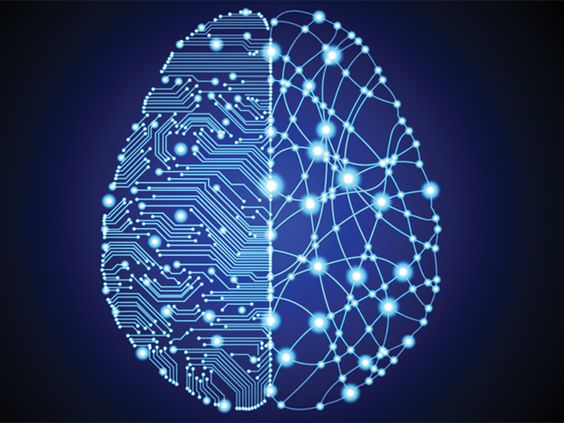by
The DermEngine Team on Jan 11, 2019
Artificial intelligence (AI) has rapidly become the centre of attention for the technological development of a wide range of activities. Healthcare is no exception, with a particular focus in dermatology services to assist in the identification of skin diseases. This article aims to discuss how revolutionary trends in AI development are contributing to a greater understanding of both its operational nature and projected impact in the dermatology industry.
1. The power of AI algorithms are shifting the paradigms of human intervention
The very nature of AI is modelled after some of the most complex human traits, such as the capacity to associate meaning to a sign, resembling the communication power of human language. In fact, for machines to perform human-like activities they need to be programmed by experts who have the knowledge and experience to “humanize” them in their learning process, much like people learn by repetition and association.
The practical application of AI’s potential yields impressive results as published in a recent study.1 Convolutional Neural Networks (CNN) are the silicon counterparts of human brain connections; a sort of artificial synapsis working to relate ideas and “memorize” them by repetitive exposure as part of a learning pattern. In the study, AI algorithms were employed to search for malignancy in non-pigmented skin lesions. The power of CNNs was utilized to search through databases comprised of millions of pre-labelled pathology overview and dermoscopic images of skin lesions and data points in a process known as Content Based Image Retrieval (CBIR). When the efficacy and accuracy of AI was tested against groups of human professionals with different levels of expertise in dermatology, machines outperformed them all. This and other examples are surging as powerful witnesses of this technology’s capacity to unequivocally excel at complex, repetitive and automated tasks.
Even when such stunning results may bring questions to the future of certain industries, it’s important to remember that the reach of AI entirely depends on the developmental scope determined by stakeholders. In other words, machines can only advance as far as humans allow them to. In the frenzy of high-speed changes occurring in AI, it serves to conceptualize the strong reliance of machines on human intervention. From computer programmers to big data scientists, these humans are the ones directly involved in enabling machines with their human-like traits. This, in turn reminds us of the importance of dermatologists and other medical professionals in the implementation of AI technology, which relies entirely on them to be utilized as a complement to their services.

2. The democratization of machine learning applications
The reliance of any human activity on AI comes with various degrees of resistance from key stakeholders in the field. However, in the case of healthcare, freely trusting intelligent algorithms to provide diagnoses and treatments which directly affect a patient’s life naturally comes with a higher level of skepticism. As medical professionals continue to utilize this technology with greater levels of reliance, the ability to understand its fundamental strengths and limitations becomes a necessity rather than a preference.
The emerging trend of transforming AI into a more openly accessible technology that is able to be understood by its users is what is referred to as “explainable AI”. Current medical AI applications don’t have explicit disclosures of the mechanisms supporting their operability. Perhaps the dedicated work of computer engineers and big data scientists may seem too complex to be exposed to general public interpretation. However, if the technology is to keep gaining space in various practices, doctors must be able to deem its recommendations as trustworthy. This will require understanding of the rationale behind the decision-making power of algorithms instead of just relying on the final outcomes provided. In other words, machine learning is to be experienced more as an evidence-based assistant to support clinical decisions rather than an obscure black box.
Understanding the complexity shown by AI models, often loaded with mathematical and computer language, can be seen as a daunting goal to achieve. Even so, decision makers in dermatology are expecting to confidently provide answers to queries involving the accuracy of recommendations given by machines. For example, a CBIR analysis rendering a certain percentage of malignancy for a skin lesion can only be understood knowing that such number originates in statistical data derived from comparison with thousands of similar images. This approach can shed light on the nature of AI’s work as it resembles the thought process followed in traditional medical learning.
For the experts behind the development of the algorithms, it must become natural to expose their reasoning and procedures to bring transparency and clarity as to how AI models function as well as to expose the scientific evidence given by statistical analysis and matching patterns on which these models are supported. This refers to the actual rationale used to obtain such results from the algorithm which, despite the different nature of the fields, becomes a common language when talking about skin diseases.
Evidently, the high expectations deposited in this technology can only be sustained with the assurance that machines are here to complement the work of human specialists and not to replace them. AI technology is to be experienced as the intelligent assistant providing extra layers of operability and scrutiny for increased accuracy. Doctors in turn, will benefit from better supported clinical decisions while enjoying more time to assist patients in the exclusively human side of their relationship, that of sincere care for fellow human beings.

Conclusion
Machine learning initiatives in healthcare environments are causing a change of paradigm in terms of tasks distribution and level of involvement. However, beyond the utility of these systems, medical professionals and patients alike are requesting a better understanding of how they work. Only by showing patterns and highlighting critical important data points will a better user experience be achieved, thus facilitating the human-computer interactive component. AI’s power to play a pivotal role in life-saving endeavours will be directly proportional to its evidence-based decision support, that is, the degree of understanding and confidence obtained from stakeholders involved in its applications. This is a relevant area for further research and development, and will be crucial for the success of AI implementation in the healthcare industry.
-The MetaOptima Team
Would you like to stay updated on the latest news of MetaOptima and its dermatology solution, DermEngine? Subscribe to our blog below! If you're ready to experience DermEngine's intuitive features for yourself, sign up for a demo today!

Sources
1- https://jamanetwork.com







